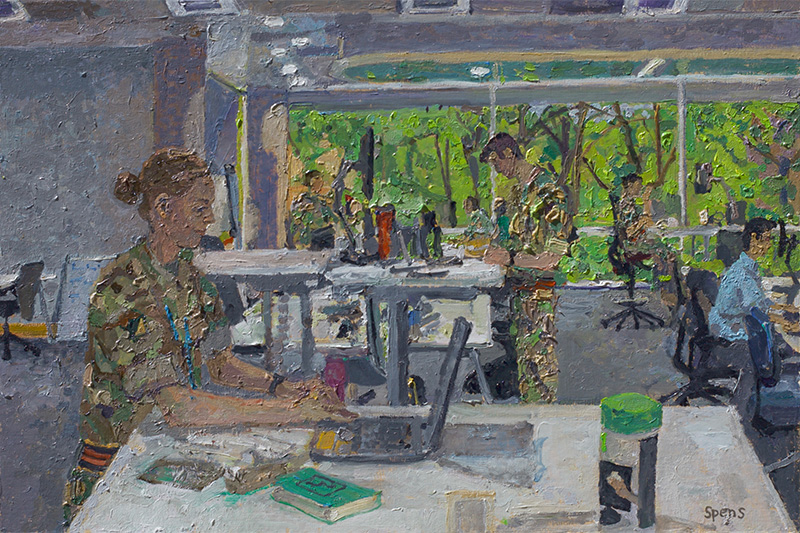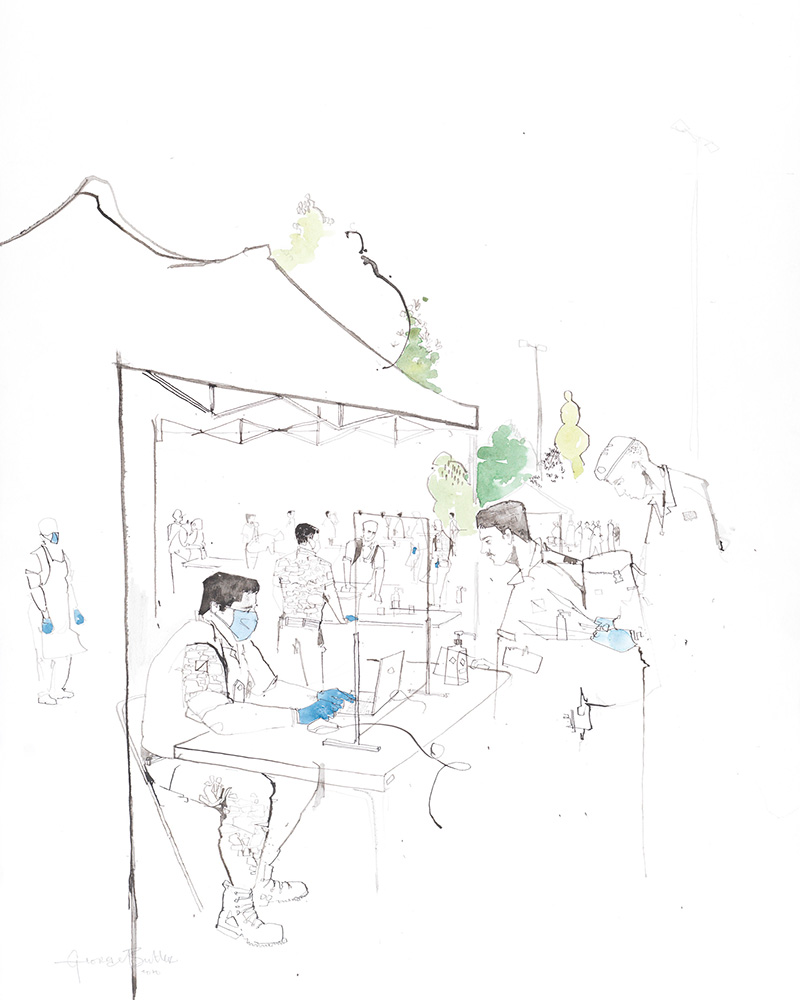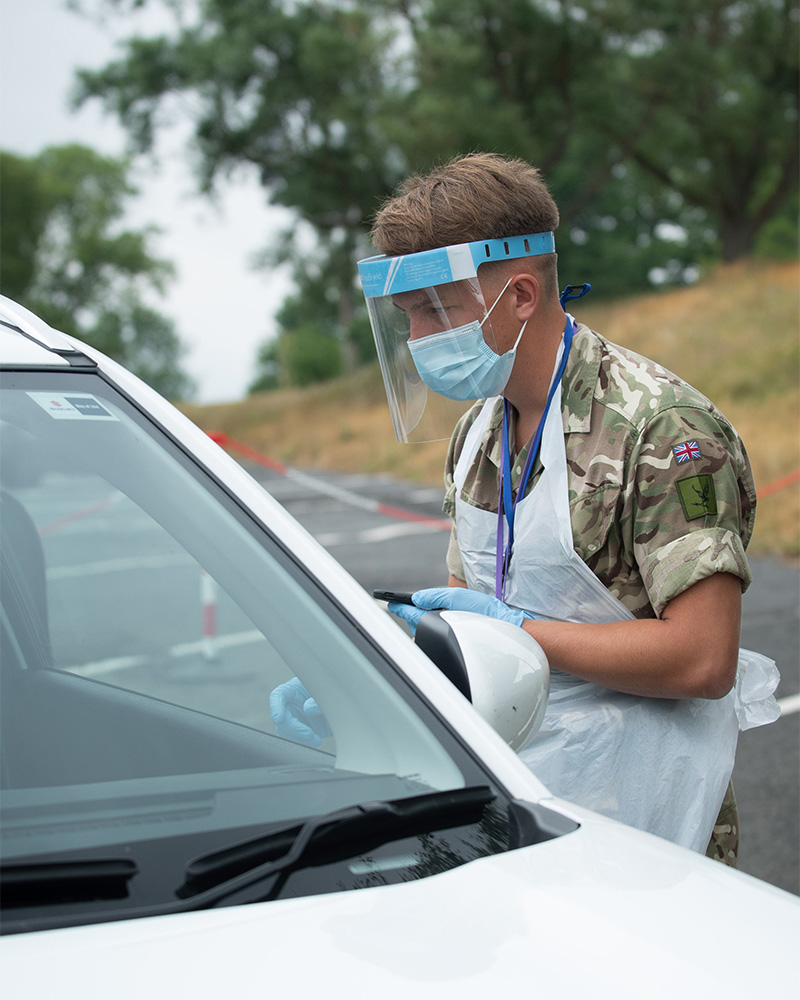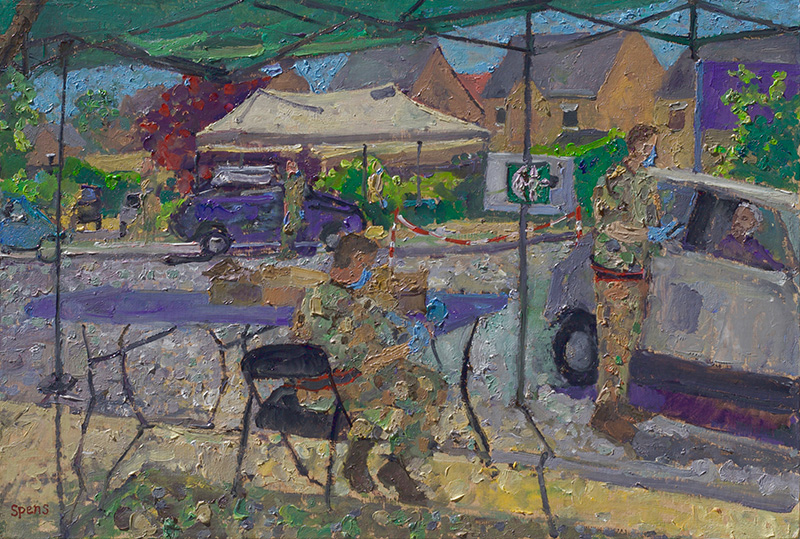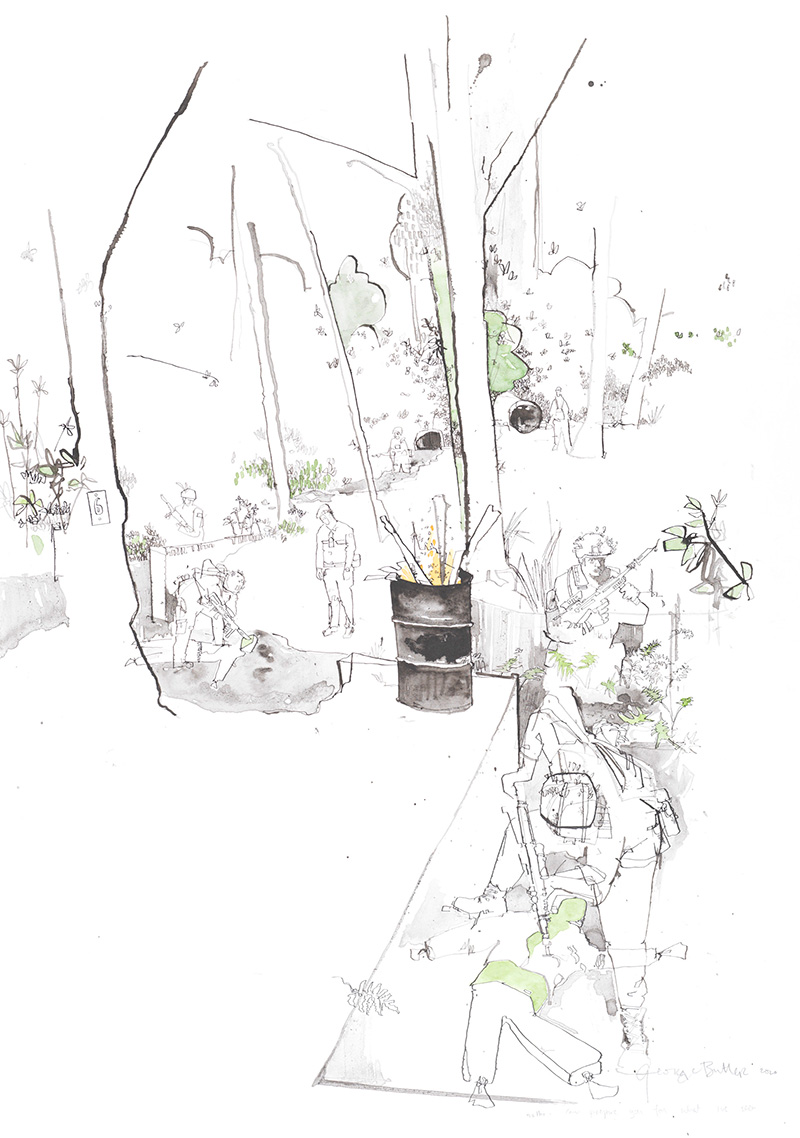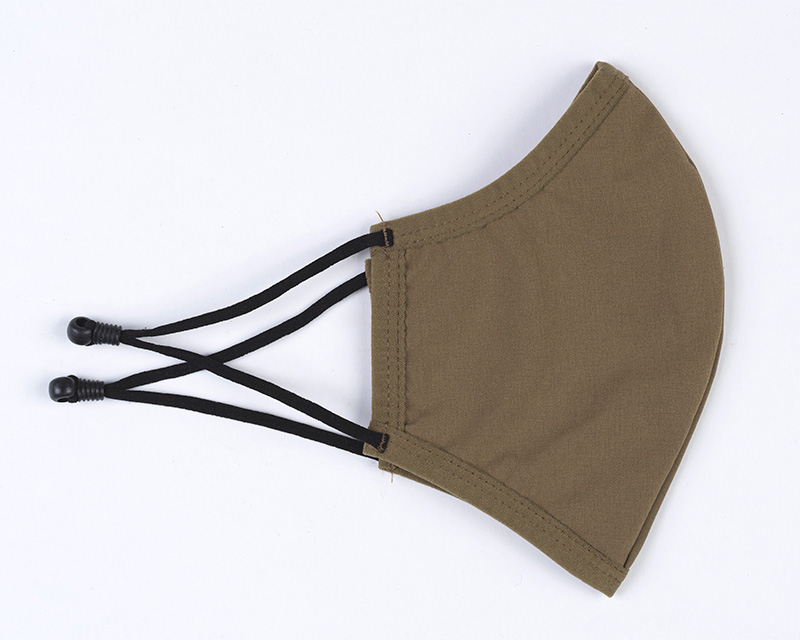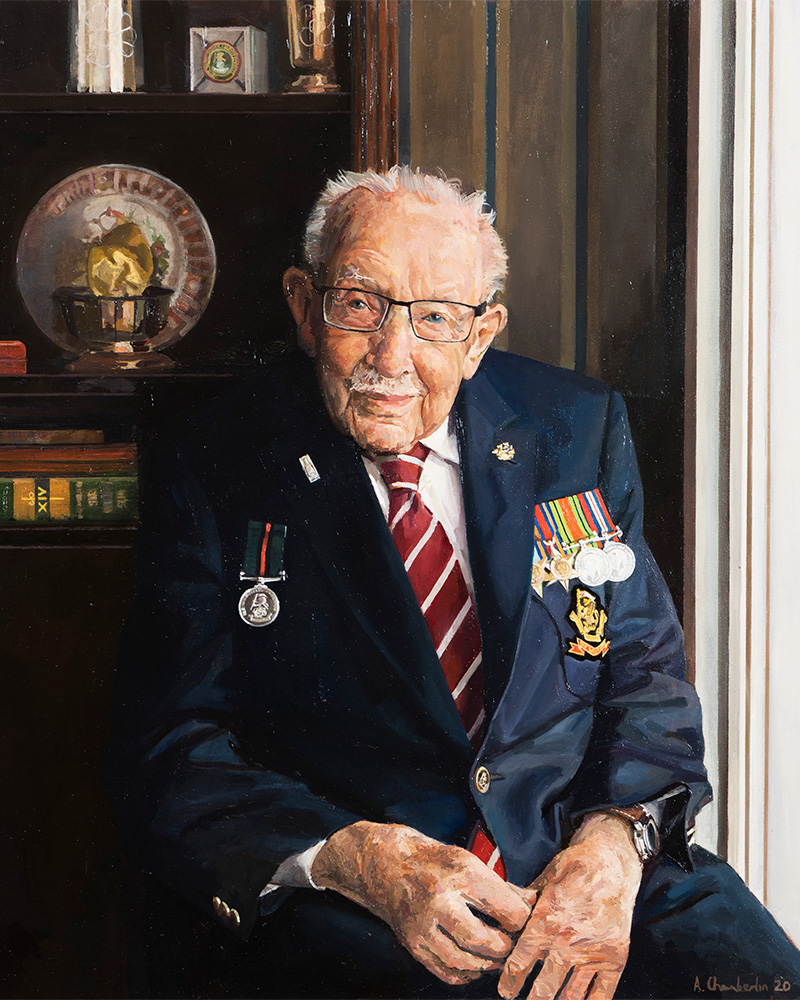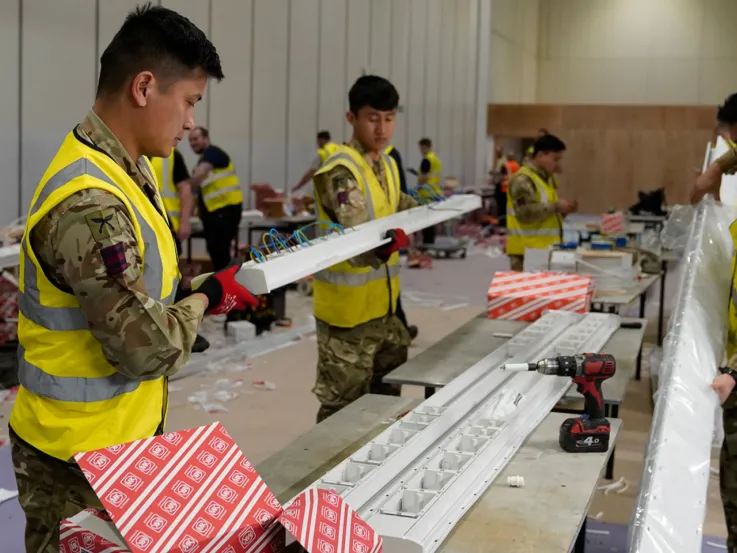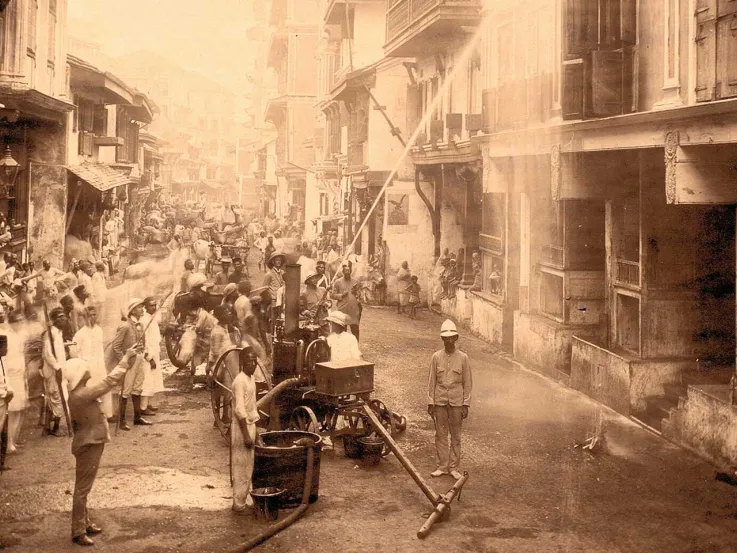Supporting public services
On 18 March 2020, the Ministry of Defence announced that it had set up the Covid Support Force, with the intention of committing 20,000 military personnel (including Reservists) to support public services during the coronavirus pandemic.
It also announced that the Defence Science and Technology Laboratory at Porton Down would be supporting Public Health England to understand the virus and to tackle its spread.
Recognising that the pandemic was a significant moment not only in UK and world history, but also in the history of the British Army, the National Army Museum set out to collect material and testimonies to represent this work.
Operation Rescript
Most of the Museum's collecting is achieved through donation offers made by the general public, or purchases made at auctions or from individual sellers. This time, the Museum approached the British Army to ask for material to represent its contribution to the UK’s response to the coronavirus pandemic, known as Operation Rescript.
The Museum also commissioned three artists – George Butler, Peter Spens and Captain Hugh Beattie – to capture the Army at work. All three artists were given support and assistance by the Army, facilitated by Lieutenant Colonel Wendy Faux RA, Lead for Arts Engagement in the British Army.
Spens and Butler both produced work in the headquarters for NHS England at Skipton House in London, where military personnel worked during the pandemic to support the NHS.
Mobile testing units
From April 2020, British Army soldiers were being trained to support PCR testing for Covid-19 by staffing Mobile Testing Units (MTUs). These were a combination of drive-through test centres set up in car parks, and vehicles that were specially converted by the Royal Engineers to serve as truly mobile testing centres.
In the summer of 2020, the Museum was given a collection of digital photographs by the British Army. They show 74 Battery (The Battle Axe Company), 47 Regiment, Royal Artillery running an MTU in the car park of West Midlands Safari Park in June 2020.
The work of the British Army had a significant impact on the infection rate, best demonstrated by their work in Liverpool. In November 2020, 200 soldiers of 8 Engineer Brigade carried out 200,000 tests. This led to infection rates in the area dropping from 680 per 100,000 to under 100 in just six weeks. By way of thanks, the Brigade was granted the Freedom of the City of Liverpool.
‘The Army’s bomb disposals teams are usually called out about 50 times a week. During Covid, this doubled to over 100 times per week because people were clearing out their lofts and their garden sheds and finding rifles and hand grenades that their dads or grandads had brought back from the war.’Lieutenant General Tyrone Urch KBE — 2021
Training new recruits
The pandemic had a major impact on the British Army. It began recruiting virtually, initially pausing Basic Training until May 2020. It then re-started with smaller, socially-distanced classes.
At the Royal Military Academy, Sandhurst, the Indian Army Memorial Room was used as a site for its training programme. The large room was transformed into a classroom with the desks spaced out to the required two-metre distance.
Once the number of cases had dropped to a safer level, the Army brought back training activities, but with extra precautions in place. It began issuing its own face coverings in the summer of 2020, with each member of personnel receiving a pack of three masks – two in khaki green and one in black.
Charity fundraising
The Museum's most famous acquisition during this period was a portrait of Captain Sir Tom Moore by Alexander Chamberlin. Captain Tom, as he’s better known, raised over £38.9 million by walking 100 laps of his garden.
He started on 6 April 2020 and by his 100th birthday - just 10 days later - he had succeeded, smashing his original fundraising target of £1,000. He was knighted for this achievement by the Queen at Windsor Castle on 17 July 2020.
Chamberlin, a professional portrait painter and a veteran of the Light Dragoons, was commissioned in collaboration with the British Army to commemorate the Second World War veteran's extraordinary fundraising efforts for NHS Charities Together.
Donating to the Collection
The National Army Museum will continue to acquire material relating to Operation Rescript to ensure our collection is as current as possible. If you have any items you would like to offer, or you have a story to tell that you would be happy for us to record, you can find more information on our Donating to the Collection page.



